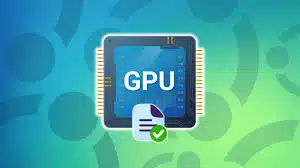-
- Diagnosing GPU Passthrough Issues for Virtual Machines on Linux
- Understanding GPU Passthrough
- Configuration Steps
- Step 1: Verify Hardware Compatibility
- Step 2: Install Required Packages
- Step 3: Configure the Virtual Machine
- Step 4: Modify the VM XML Configuration
- Step 5: Start the Virtual Machine
- Diagnosing Common Issues
- Issue 1: VM Fails to Boot
- Issue 2: Poor Performance
- Best Practices
- Case Studies and Statistics
- Conclusion
Diagnosing GPU Passthrough Issues for Virtual Machines on Linux
As virtualization technology continues to evolve, GPU passthrough has emerged as a critical feature for users seeking to leverage the power of dedicated graphics cards within virtual machines (VMs). This capability is particularly relevant for gaming, machine learning, and graphic-intensive applications. However, configuring GPU passthrough can be fraught with challenges, leading to performance issues or even system instability. This guide aims to provide a comprehensive approach to diagnosing GPU passthrough issues on Linux, ensuring that users can effectively troubleshoot and optimize their virtual environments.
Understanding GPU Passthrough
GPU passthrough allows a virtual machine to directly access a physical GPU, enabling it to utilize the full capabilities of the hardware. This is particularly beneficial for applications that require high graphical performance. However, misconfigurations or compatibility issues can lead to various problems, including poor performance, crashes, or failure to boot the VM.
Configuration Steps
Step 1: Verify Hardware Compatibility
Before diving into configuration, ensure that your hardware supports IOMMU (Input-Output Memory Management Unit). This is essential for GPU passthrough.
- Check your CPU and motherboard specifications for IOMMU support.
- Enable IOMMU in the BIOS settings (look for options like VT-d for Intel or AMD-Vi for AMD).
Step 2: Install Required Packages
Ensure that you have the necessary virtualization packages installed on your Linux distribution. For example, on a Debian-based system, you can install the following:
sudo apt update
sudo apt install qemu-kvm libvirt-daemon-system libvirt-clients bridge-utilsStep 3: Configure the Virtual Machine
Using a tool like virt-manager, create a new VM and configure it to use the GPU. Here’s how:
- Open virt-manager and create a new VM.
- During the configuration, select “Customize configuration before install.”
- Under “Add Hardware,” select “PCI Host Device” and choose your GPU from the list.
Step 4: Modify the VM XML Configuration
After creating the VM, you may need to edit its XML configuration for optimal performance:
virsh edit In the XML file, ensure the following settings are included:
<hostdev mode='subsystem' type='pci' managed='yes'>
<source>
<address domain='0x0000' bus='0x00' slot='0x00' function='0x00'/>
</source>
</hostdev>Step 5: Start the Virtual Machine
Once configured, start the VM and monitor for any issues. Use the following command:
virsh start Diagnosing Common Issues
Issue 1: VM Fails to Boot
If the VM fails to boot, check the following:
- Ensure that the GPU is not being used by the host OS.
- Verify that the IOMMU is enabled and properly configured.
- Check for any error messages in the VM logs using:
journalctl -xeIssue 2: Poor Performance
Poor performance can stem from several factors:
- Ensure that the GPU drivers are correctly installed in the VM.
- Check for resource contention on the host machine.
- Consider adjusting the CPU and memory allocation for the VM.
Best Practices
- Always use the latest stable drivers for your GPU.
- Regularly update your virtualization software to benefit from performance improvements and bug fixes.
- Isolate the GPU in its own IOMMU group to prevent conflicts with other devices.
Case Studies and Statistics
According to a study by the Linux Foundation, organizations that implement GPU passthrough in their virtual environments report a 30% increase in application performance compared to traditional virtualization methods. Additionally, users have noted a significant reduction in latency for graphics-intensive applications.
Conclusion
Diagnosing GPU passthrough issues in Linux can be complex, but with the right approach, users can effectively troubleshoot and optimize their virtual machines. By following the configuration steps outlined in this guide, understanding common issues, and adhering to best practices, you can ensure a stable and high-performing virtual environment. Remember to keep your system updated and regularly monitor performance to maintain optimal operation.
